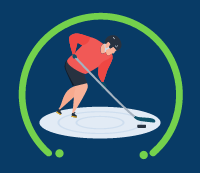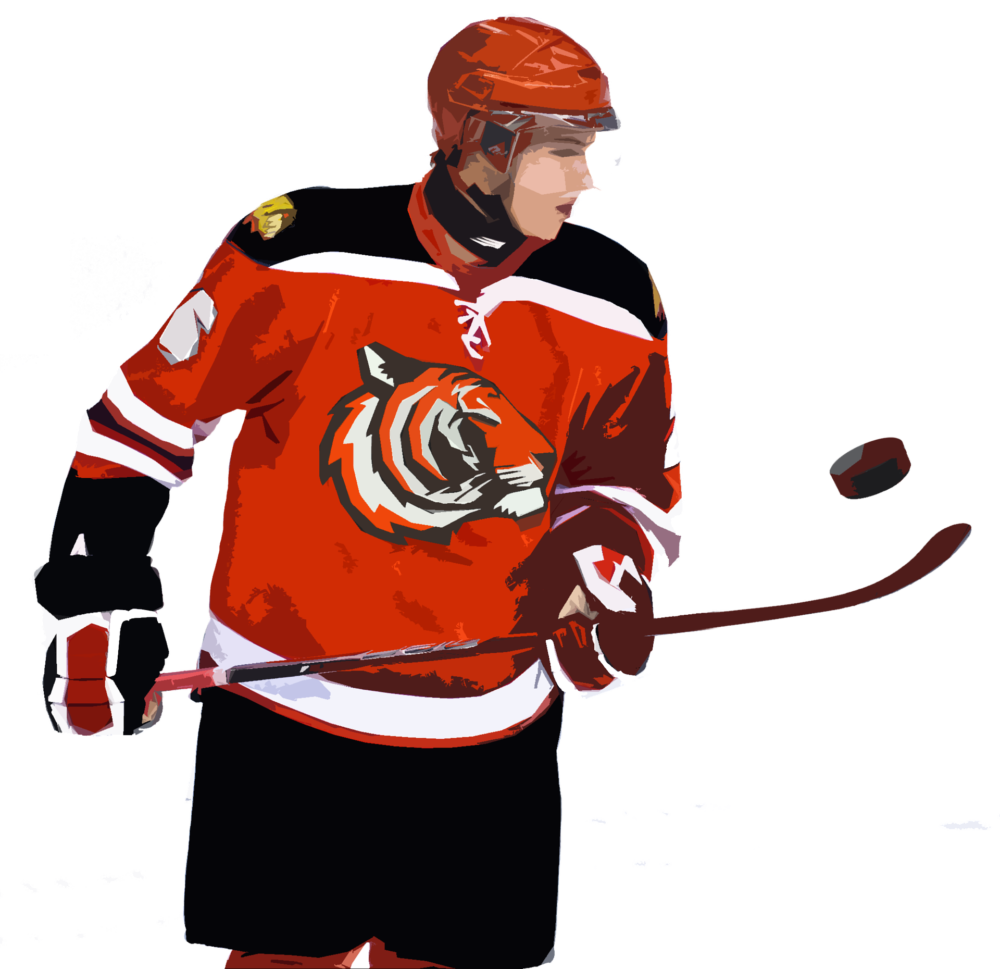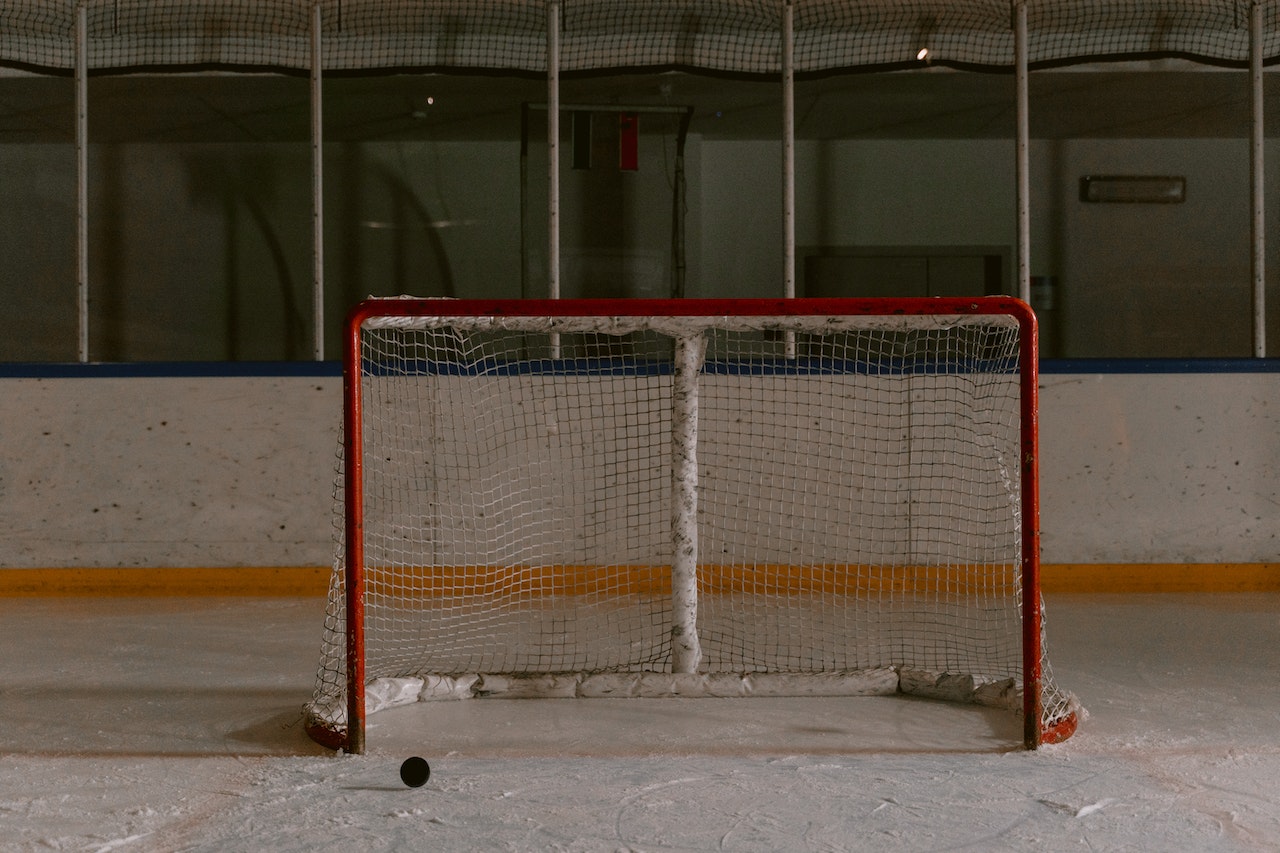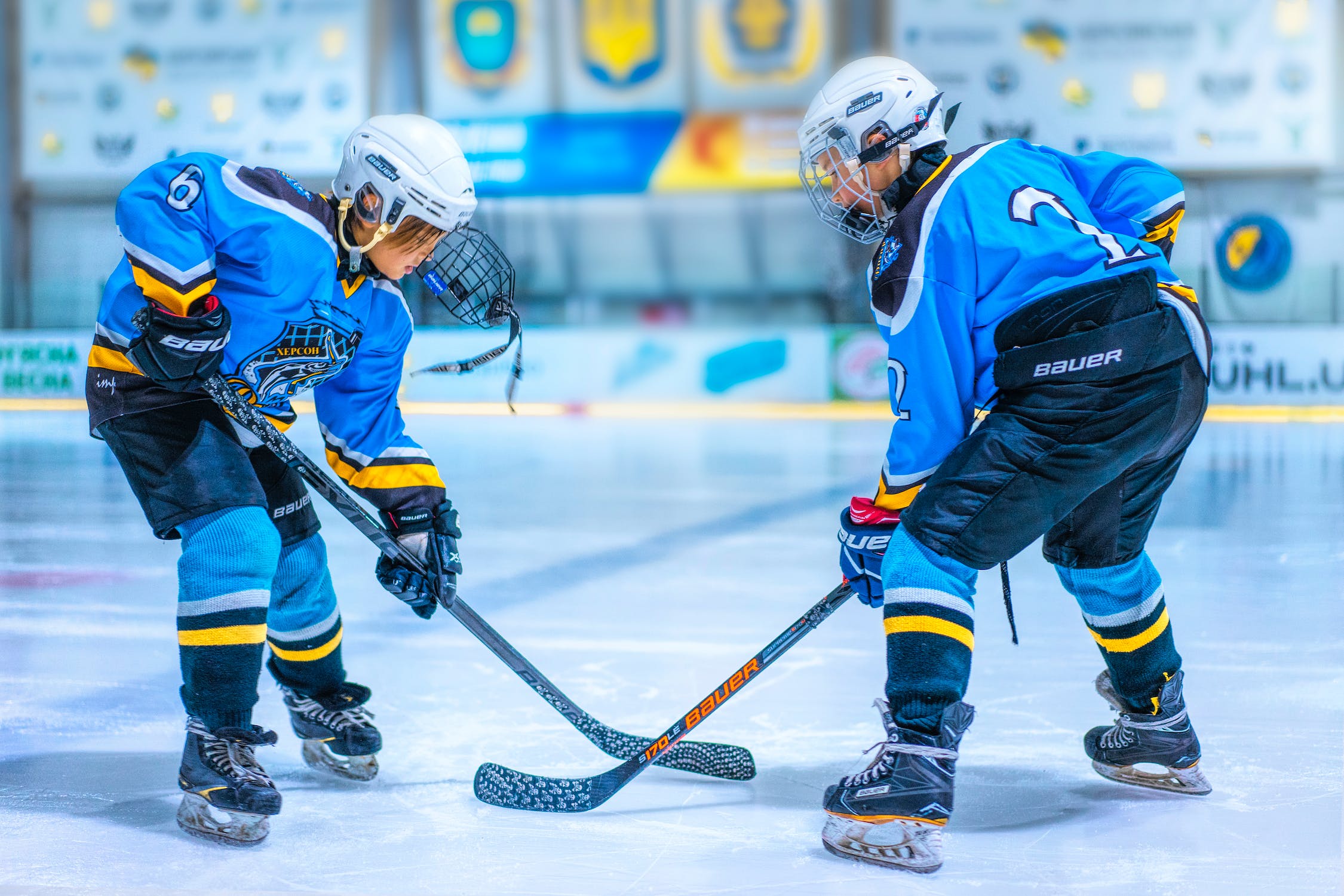Over the years, I’ve seen how much off-ice training can shape a hockey player’s performance. It’s not just about getting stronger or faster — it’s about building the kind of foundation that holds up when you’re gassed in the third period, chasing down a loose puck, or battling at the blue line.
In 2025, we’re well past the days when “off-ice” meant a few laps and some basic push-ups. Off-ice training today is as structured and data-driven as anything you’ll do in skates. We now know — thanks to new research — that sprint metrics like 30m sprint time and maximum sprint speed have a direct link to how well you perform on the ice. That’s not just theory; it’s measurable performance.
For me, off-ice work isn’t optional. It’s where players develop the real difference-makers: stability, acceleration, coordination, and stamina. It’s where you prevent injuries that would’ve taken you out for weeks. It’s also where younger players, especially, can build body control, rhythm, and confidence before they ever set foot on the ice.
Whether you’re a beginner trying to boost your endurance or a seasoned player chasing an edge, off-ice training will change how you show up for the game. And if you’re looking to build something sustainable, not just short-term gains, this is where it starts.
Don’t forget to check out my Beginner’s Guide on Ice Hockey Rules.
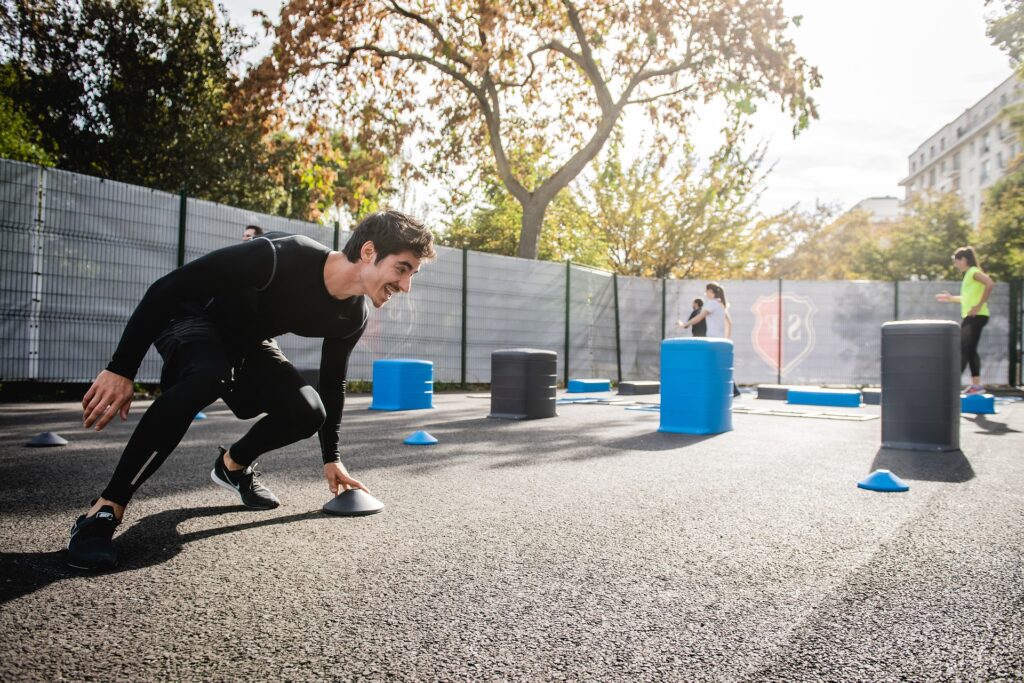
Types of Off-Ice Training for Ice Hockey Players
Over the years, I’ve learned that a well-rounded off-ice program does far more than just keep you fit — it directly improves your speed, shot power, stamina, and confidence on the ice. Here’s how I break it down:
🏋️ Strength Training
Strength forms the base for explosive movement, stability, and injury prevention. I focus on three areas:
-
Lower Body: Squats, lunges, and deadlifts help build the power needed for hard stops, quick starts, and battling in corners. Single-leg variations add balance and mimic skating mechanics.
-
Upper Body: Chin-ups, push-ups, and dumbbell presses strengthen the muscles used in shooting and body checks.
-
Core: Planks, Russian twists, and anti-rotation drills keep your torso stable — critical for transferring energy from legs to stick.
Whether you’re using bodyweight, resistance bands, or weights, the goal is always functional strength — not just bulking up, but getting stronger in ways that matter on the ice.
🏃♂️ Cardiovascular and Endurance Training
Conditioning is what lets you bring the same intensity in the third period as you did in the first. I split cardio into two key categories:
-
Anaerobic: High-intensity interval training (HIIT), shuttle sprints, and battle ropes build short-burst explosiveness — perfect for replicating the stop-start rhythm of a shift.
-
Aerobic: Long jogs, cycling, or rowing helps build the engine to recover quickly between shifts and maintain output over the game.
Research from 2024 confirms that sprint performance off the ice directly correlates with in-game skating performance — so don’t skip speed work.
🌀 Flexibility and Mobility
Mobility is underrated. Tight hips, stiff ankles, or poor range of motion can kill your skating stride. I integrate:
-
Dynamic warm-ups: Leg swings, arm circles, hip openers before every session.
-
Static stretching: After workouts to help recovery.
-
Targeted mobility work: Ankles, hips, and T-spine especially — these are your pillars for powerful, injury-free skating.
🎯 Agility and Balance
For tight turns, puck control, and reacting to unpredictable plays, agility drills are essential.
-
Agility ladders, cone drills, and reaction lights train quick footwork and coordination.
-
Balance work: Wobble boards, single-leg exercises, and core stabilization drills improve proprioception — so you stay upright under pressure.
🧠 Cognitive & Coordination Drills
This is a newer area I’ve been exploring more. Tools like tennis ball drops, peripheral vision drills, or mirror drills help simulate game-like thinking and reaction.
Off-Ice Training Routine Table
| Training Focus | Example Exercises | Reps/Sets | Key Benefit |
|---|---|---|---|
| Lower Body Strength | Squats, Lunges, Box Jumps | 3–4 sets of 6–10 reps | Stronger strides, explosive power |
| Upper Body Strength | Chin-Ups, Push-Ups, Dumbbell Bench Press | 3 sets of 8–12 reps | Improved shot power, body checking |
| Core & Stability | Planks, Russian Twists, Single-Leg Balance | 3 sets of 30–60 seconds | Better balance and energy transfer |
| Agility & Quickness | Cone Drills, Skater Bounds, Ladder Drills | 3–4 sets of 20–30 seconds | Faster turns and better edge control |
| Endurance & Conditioning | HIIT Sprints, Bike Intervals, Battle Ropes | 6–10 intervals of 30s on/off | Increased shift stamina and recovery |
| Flexibility & Mobility | Dynamic Warm-Ups, Static Stretching, Hip Openers | 5–10 minutes per session | Injury prevention and full range motion |
The Key Benefits of Off-Ice Hockey Training
Off-ice training has made a huge difference in how I approach my game—and I’ve seen it do the same for countless players I’ve trained alongside. Whether you’re aiming for better speed, quicker reactions, or fewer injuries during the season, training off the ice plays a foundational role in building those improvements. Let’s break down the benefits that matter most—physically and mentally.
Physical Benefits
The most obvious edge off-ice training gives is physical. Strength training helps build power for your shot, battles along the boards, and explosive first steps. For me, lower body work like squats, lunges, and deadlifts have had the biggest impact on my skating. Mix that with plyometrics and single-leg balance drills, and you’re setting yourself up for faster acceleration and more stability on the ice.
Endurance is another big win. High-Intensity Interval Training (HIIT) sessions mimic the short bursts of effort in a shift. In 2025, sprint-based drills and maximum speed training—especially the 30-meter sprint—are being used more than ever because of how well they translate to actual in-game performance.
Mental Benefits
I used to underestimate the mental side of off-ice work—until I hit a stretch of rough games and realized focus was the issue. Training your mind is just as critical as training your body. Visualization routines, short breathing exercises before games, and consistent mental reps during agility drills helped me stay dialed in when the puck dropped.
Confidence is built in the gym and in the routines you do when nobody’s watching. When you’ve done the hard work—whether it’s nailing that last set of box jumps or sticking a perfect plank hold—you take that certainty with you onto the ice. You know what your body can handle, and that lets your instincts take over.
To learn about key positions and roles of players in ice hockey, read my guide on Ice Hockey Positions.
Importance of Nutrition for Off-Ice Hockey Training
From my experience, what you eat off the ice directly impacts how you perform on it. Off-ice training is demanding — and if you’re not fueling properly, you’re not getting the full return on your effort.
A well-balanced diet is key. You need complex carbohydrates to power your workouts, lean protein to rebuild muscle, and healthy fats to support long-term energy and recovery. I always encourage players to plan their meals around training — especially on high-intensity days.
Nutritional Guidelines for Ice Hockey Players
| Nutrient | Why It Matters | Good Sources |
|---|---|---|
| Carbohydrates | Your main fuel source — crucial for energy during sprints and long training days. | Oats, rice, sweet potatoes, fruits |
| Protein | Supports muscle repair and growth post-training. | Chicken, eggs, Greek yogurt, legumes |
| Healthy Fats | Provides sustained energy and supports recovery. | Avocados, nuts, olive oil, fatty fish |
| Hydration | Dehydration affects both endurance and decision-making. | Water, sports drinks (during intense workouts) |
I’ve also seen that players who stay consistent with hydration and avoid crash diets bounce back faster between sessions. A simple rule: drink before you’re thirsty and eat like you’re training to win.
Learn more about ice hockey nutrition, including key strategies, meal planning, and performance tips, in my detailed blog.
Importance of Rest and Recovery for Off-Ice Hockey Training
One thing I’ve learned the hard way — more training isn’t always better. Without enough recovery, progress stalls, and injuries creep in. Off-ice training is intense, and your body needs time to adapt, rebuild, and grow stronger.
Sleep is where most of that recovery happens. Getting 7–9 hours a night consistently has made a noticeable difference in how sharp I feel during training. It’s not just about muscle repair — quality sleep also improves reaction time, focus, and mood.
Beyond sleep, active recovery strategies have helped me bounce back faster after tough sessions. Foam rolling, light stretching, and even short walks on off days keep my body moving without overloading it. Compression gear and ice baths also play a role in reducing soreness and inflammation when training volume is high.
Below table provides a concise list of tips for ice hockey players to aid in rest and recovery after games and practices.
Rest and Recovery Tips for Ice Hockey Players
| Rest and Recovery Tips | Description | Benefits |
|---|---|---|
| Get enough sleep | Aim for 7-8 hours of sleep each night to allow your body to repair and recover | Boosts energy levels and improves overall performance |
| Use compression gear | Consider using compression garments or sleeves to promote blood flow and reduce muscle fatigue | Reduces muscle soreness and promotes faster recovery |
| Address injuries promptly | Don't ignore minor injuries or pain, address them promptly with RICE and seek medical attention if necessary | Prevents further injury and promotes healing |
| Stay hydrated | Drink water or sports drinks before, during, and after games to replenish electrolytes lost through sweat | Prevents dehydration and improves endurance |
| Eat a balanced diet | Fuel your body with a balanced diet that includes protein, complex carbs, and healthy fats | Improves overall health and supports muscle recovery |
| Take rest days | Incorporate rest days into your training schedule to prevent overuse injuries and allow your body to recover | Restores energy and prevents burnout |
| Take mental breaks | Participate in other activities that you enjoy to stay mentally rested | Reduces stress and prevents mental burnout |
| Stretch regularly | Stretch before and after games to increase flexibility and reduce the risk of injury | Improves range of motion and prevents muscle strains |
| Use ice therapy | Take ice baths or use ice packs on sore or injured areas to reduce inflammation and promote healing | Speeds up recovery and reduces muscle soreness |
Take your off-ice training to new heights with our focused resources. Elevate your performance between the pipes with our goaltending guide, master body checking techniques with our body checking article, and improve your scoring skills with our shooting guide. Unleash your full potential on the ice!
Recovery isn’t passive — it’s a key part of the process. Skipping it just delays your progress. When you treat it with the same priority as your workouts, your performance will show it.
Common Questions on Off-Ice Hockey Training
How do hockey players train in the off-season?
In the off-season, I usually shift focus to building a strong foundation — strength training, anaerobic conditioning, and speed development. It’s also the time I test new drills or programs before the intensity of the season returns. Most players structure their off-ice hockey training program into phases: strength, power, speed, and conditioning — with regular rest weeks built in.
How do you get faster off the ice in hockey?
Speed starts with strength. Lower-body exercises like squats, lunges, and single-leg plyometrics have made a noticeable difference for me. Combine them with short sprints, agility ladder drills, and wall accelerations. Off-ice hockey workouts that mimic quick direction changes translate well to on-ice speed.
How many days a week should a hockey player train off the ice?
For me, 3 to 4 days per week is the sweet spot during the season. In the off-season, I may go up to 5 days with a mix of weight training, cardio, and mobility work. Recovery days are just as important — so I always schedule them in.
What is the best workout for hockey players off the ice?
There’s no one-size-fits-all workout, but a good off-ice training program should cover strength, endurance, agility, and balance. If I had to pick my go-to drills: sled pushes, box jumps, HIIT sprints, single-leg squats, and core circuits are staples. I also prioritize mobility and shoulder stability to avoid injury.
How can I increase my stamina for hockey?
Building hockey endurance off the ice takes both aerobic and anaerobic work. I use a mix of HIIT and steady-state cardio — like sprint intervals and long-distance cycling or rowing. It mimics shift-style bursts followed by recovery, just like real games.
Are off-ice hockey drills useful for stickhandling and reaction time?
Absolutely. I often use tennis ball drop drills and balance board stickhandling to challenge my coordination and reaction time. These drills improve my feel for the puck, even when I’m not on the ice.
Do NHL players do off-ice training too?
Yes — NHL players have some of the most advanced off-ice routines. Most work with strength and conditioning coaches on personalized hockey off-ice training programs that include mobility, nutrition, and mental performance strategies.
Off-ice training is a vital aspect of hockey players’ development. But no matter where you’re playing, safety should always be your top priority. Learn how to select and buy the best hockey helmet to protect your head with our hockey helmet buying guide
Final thoughts
Off-ice training is where I’ve seen the biggest breakthroughs in my game. It’s not just about building strength or logging miles on a bike — it’s about translating every rep, jump, and sprint into better decision-making, more explosive strides, and longer-lasting energy on the ice.
What I’ve learned is that the best off-ice training for hockey players isn’t a checklist — it’s a mindset. It’s about showing up consistently, focusing on quality movement, and recovering smart so you can push harder the next time. Whether it’s refining core strength, fixing mobility issues, or tracking sprint times week over week, every detail matters.
But the real payoff? Feeling sharper, faster, and more in control every time I step onto the rink.
If you’re serious about your development, build a training plan that works for your level, your schedule, and your goals — and revisit it often. Off-ice work doesn’t replace ice time, but when done right, it’s what gives your time on the ice an edge.
Enhance Your Ice Hockey Journey: Equipment, Brands, Skills, and More!
Discover the key elements to excel in ice hockey with our valuable resources. Explore top hockey brands for quality equipment, elevate your skills to dominate the game, and ensure you’re well-equipped for success on the ice.
- Top Hockey Brands: Discover Quality Equipment and Apparel
- Ice Hockey Equipment: Essential Gear for Performance and Protection
- Icing in Hockey: Grasp the Concept and Its Impact on Game Strategy
- Ice Hockey Skills: Acquire the Expertise to Dominate the Game
- Understanding Hockey Power Plays
Elevate your ice hockey journey by exploring top hockey brands, acquiring essential equipment, developing crucial skills, and understanding the strategic impact of icing in hockey. Let us guide you towards success on the ice.
